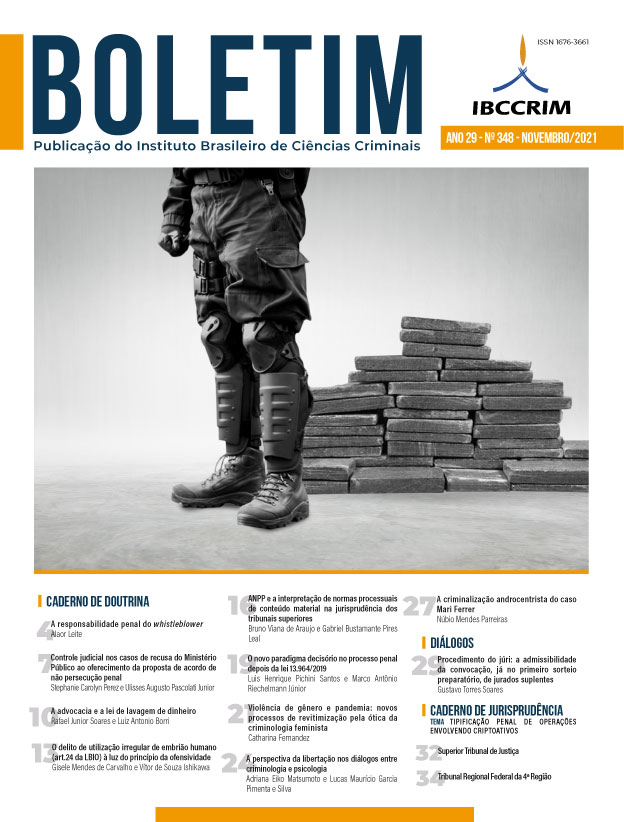The new decision-making model in the criminal procedure after the law nº 13.964/2019
Views: 71Keywords:
Rationale for decisions, Contradictory, Nullities, Law 13.964/2019Abstract
This paper seeks to demonstrate that the inclusion of the hypothesis provided on art. 315, §2 of the Code of Criminal Procedure has the function of complementing constitutional imperative. Despite the fact that legislative innovation was included in the chapter on preventive detention, it must be observed in all stages of its process, including the investigation phase, in order to make it possible to exercise other fundamental procedural guarantees.
Downloads
Publication Facts
Reviewer profiles N/A
Author statements
- Academic society
- Instituto Brasileiro de Ciências Criminais
- Publisher
- IBCCRIM
Downloads
Published
How to Cite
Issue
Section
License
Copyright of published articles belongs to the author, but with journal rights over the first publication and respecting the one-year exclusivity period. Authors may only use the same results in other publications by clearly indicating this journal as the medium of the original publication. If there is no such indication, it will be considered a situation of self-plagiarism.
Therefore, the reproduction, total or partial, of the articles published here is subject to the express mention of the origin of its publication in this journal, citing the volume and number of this publication. For legal purposes, the source of the original publication must be consigned, in addition to the DOI link for cross-reference (if any).


 Português (Brasil)
Português (Brasil)
 English
English
 Español (España)
Español (España)






